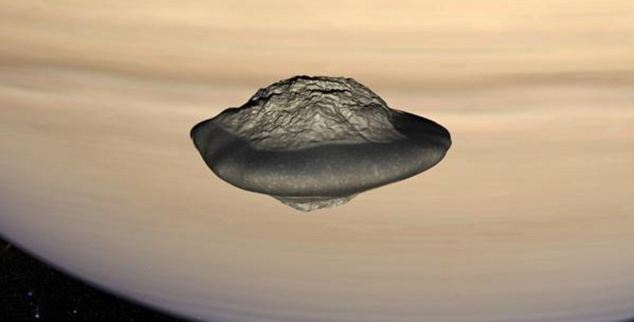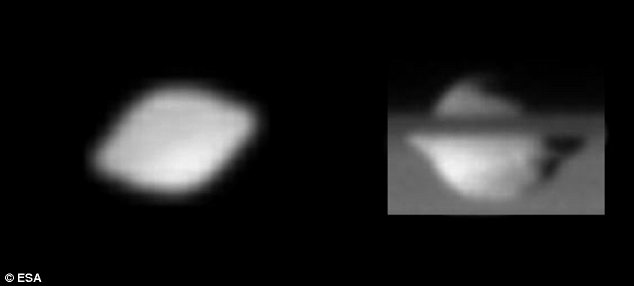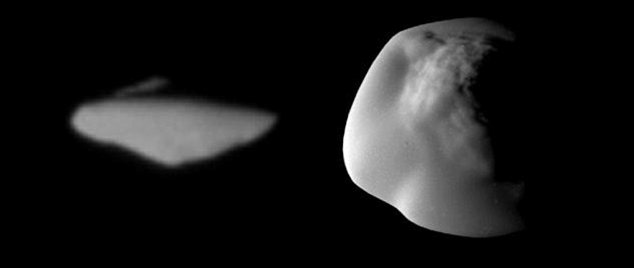Comment: If it's coming from an official space science organization, you can be pretty sure its "science" is bogus. Take the following article, for example, with our commentary embedded within.
They look more like flying-saucers than icy moons, but Pan and Atlas are two of Saturn's strangest satellites.
Scientists have long been puzzled by how the oddly-shaped moons, which are only 20miles across, came to be.
Comment: They are only strange because NASA and the ESA. have no clue how the solar system really works.
Researchers based at the European Space Agency now think they have some answers after studying several years worth of cosmic images.

Comment: Wow. James McCanney predicted "sweeper moons" in the gaps of Saturn's rings over thirty years go, before Pan was even discovered. It took ESA this long to realize this?
However, they would have needed a jump start as it is not gravitationally possible for small particles to fuse together within the rings.
Comment: Again, if they had read McCanney, they wouldn't be so hopelessly confused. Gravity is NOT the only force acting in our solar system. The "shepherd" or "sweeper" moons attract the material of the rings because the moons are discharging Saturn's electrical capacitor. The positively charged ions (including dust and gases) get pulled to the nucleus where they recombine with electrons, depositing a dust cloud around the moon. This explains the disc-like shape of Pan, which has cleared out the "Encke Gap" in Saturn's rings. Just look at this picture.
Therefore, each moon would have started with a massive core that was a leftover from the original collisions that caused the rings.
Carolyn Porco from ESA, said: 'We think the only way these moons could have reached the sizes they are now, in the ring environment as we now know it to be, was to start off with a massive core to which the smaller, more porous ring particles could easily become bound.'
Comment: More evidence of the ESA's extreme lack of imagination.
By this process, a moon will grow even if it is relatively close to Saturn. The result is a ring-region moon about two to three times the size of its dense ice core, covered with a thick shell of porous, icy ring material.
Simulations performed at Southwest Research Institute in 2010 suggest that Saturn originally had several large Titan-sized moons, which spiraled into the planet during its early history.

Planetary tidal forces as it crossed the region of the current B ring would then have stripped material from its outer layers, creating the initial ice ring.
Dr Robin Canup from the SwRI Planetary Science Directorate in Boulder, who led the study, said: 'The new model proposes that the rings are primordial, formed from the same events that left Titan as Saturn's sole large satellite,.
'The implication is that the rings and the Saturnian moons interior to and including Tethys share a coupled origin, and are the last remnants of a lost companion satellite to Titan.'
But how then to explain the strange ridges that give Pan and Atlas their unique shapes?
The answer, scientists suspect, lies in accretion discs, that are seen at all scales in the universe from planetary rings to galaxies. Essentially as the disc spins, forces cause the edges of the structure to flatten out and a bulge to form towards the centre.
'Our computer simulations show that the ridges must have accreted rapidly when Saturn's rings were thin, forming small accretion disks around the equators of Pan and Atlas,' said Sebastien Charnoz, from the University Paris-Diderot in France.




Reader Comments
to our Newsletter